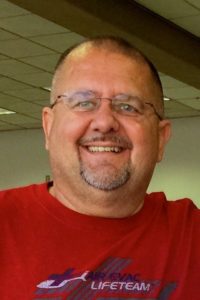by PGx Medical | Dec 9, 2016 | Uncategorized
Welcome to our Friday FOCUS on Pharmacogenetics
Each Friday we will post new and relevant information regarding Pharmacogenetics. We hope you will find this useful and pass along to colleagues. If you should have any questions regarding pharmacogenetics, please feel free to reach out to us at PGx Medical, info@pgxmed.com or 405-509-5112.

Tag: F329 Unnecessary Drugs
F329 was often cited related to the use of psychotropic drugs, this tag actually relates to the use of all medications. There was a significant period of time in some states where the overuse of Tylenol was cited routinely under F329. Several things have happened with F329 since the release of the new/updated regulations. First, CMS moved F329 from the Quality of Care category and moved it to the Pharmacy Services category, and secondly an entire section of Psychotropic Drugs was added to the definition that will go into effect with Phase 2 (November 2017). Let’s look at the two-part definition of F329:
Part I of the F329 definition remains essentially the same and pertains to all medications a resident might be using. In essence, F329 requires facilities to ensure that residents are on the lowest dose of all medications possible, and that those medications are used for only the duration of time necessary. Facilities also must ensure that there is a process in place for monitoring the medications and there is an adequate indication or diagnoses for the use of the medication prescribed. Finally, should the resident suffer any adverse consequences related to the use of a drug, then the drug should be reduced or discontinued.
While Part II does not go into effect until one year from now, it would be prudent for facilities to begin providing education and training to all pertinent staff, including nursing staff, physicians, all other prescribers and medical directors regarding this regulation so that they can get into the habit of addressing PRN psychotropics in such a manner that adheres to these new regulatory requirements. Facilities will need to develop an IDT process that strictly evaluates the use of PRN psychotropic medication and ensures that documentation requirements are met for the required time frames. Furthermore, identifying, care planning, implementing and documenting, individualized non-pharmacological behavior interventions is a significant piece to ensuring success related to F329. All staff will need to know and understand how and when behavioral interventions should be utilized and what the ultimate goal is for the resident’s treatment.
The Intent of F329 states:
“…each resident’s entire drug/medication regimen be managed and monitored to achieve the following goals:
• The medication regimen helps promote or maintain the resident’s highest practicable mental, physical, and psychosocial well-being, as identified by the resident and/or representative(s) in collaboration with the attending physician and facility staff;
• Each resident receives only those medications, in doses and for the duration clinically indicated to treat the resident’s assessed condition(s);
• Non-pharmacological interventions (such as behavioral interventions) are considered and used when indicated, instead of, or in addition to, medication;
• Clinically significant adverse consequences are minimized; and
- The potential contribution of the medication regimen to an unanticipated decline or newly emerging or worsening symptom is recognized and evaluated, and the regimen is modified when appropriate.”
Pharmacogenetics is a great tool to help manage medications. This no-cost test will provide healthcare professionals with evidence-based reports unique to each individual resident based on their genetic profile. This allows, allowing physicians, nurses and pharmacists with valuable information to help determine the best medical plan of action as it relates to medication management. Whether it is psychotropic reduction, drug-on-drug interactions, or a report that helps reduce/increase dosages as appropriate for each individual, pharmacogenetics will provide you with the information needed to help guide you with current medications, and be a roadmap for future medications.
PGx Medical is the trusted and experienced resource for the implementation of pharmacogenetics in the field of aging services. Contact PGx Medical for more information, or to be part of an ongoing operational Pilot Program:
PGx Medical
Individualized Care – Personalized Medicine
info@pgxmed.com
405-509-5112
Source: Kaile Hilliard, LCSW
Regulatory Compliance Manager-West Division
by PGx Medical | Dec 2, 2016 | Uncategorized
Gene mutations that affect drug metabolism may explain higher hospitalization rates in some older adults taking multiple medications, according to researchers from Columbia University.

Nearly 40 percent of Americans 65 or older take at least five or more medications.
Polypharmacy (the use of multiple medications), is on the rise among U.S. seniors, according to an article in Sciencedaily.com. The article states, approximately 40 percent of Americans 65 or older take at least five or more medications. Previous studies have shown that older adults with polypharmacy are more prone to adverse events and hospitalizations than those taking fewer medications. However, few studies have investigated individual, genetic risk factors for adverse drug events in this population.
For this small pilot study, the researchers hypothesized that older adults with polypharmacy and increased hospitalization rates would have more genes associated with altered drug metabolism or lack of sensitivity to certain drugs than those with fewer hospitalizations.
The researchers performed pharmacogenetic testing to identify five such genes — CYP2C19, CYP2C9, VKORC1, CYP2D6, CYP3A4/5 — in older adults with polypharmacy. The study included six seniors who had been admitted to the hospital at least three times over the past two years and six age-matched controls who had fewer hospitalizations. Both groups had an average age of 77 years, and were taking an average of 14 medications.
In the higher hospitalization group, each of the participants had at least one of the mutations, and half had more than one. None of the controls had any of the mutations.
“Although this was a very small pilot study, the findings suggest that routine testing for these gene variants could improve health outcomes for older adults taking multiple medications,” according to Joseph Finkelstein, MD, PhD, director of the Center for Bioinformatics and Data Analytics in Oral Health at the Columbia University College of Dental Medicine, associate professor of health informatics in dentistry at Columbia University Medical Center, and lead author of the paper. “In dentistry, for example, pharmacogenetic testing could be part of a personalized approach in which clinicians select pain medications that are most effective and least risky for each patient.”
Pharmacogenetics aligns current and future medications with each persons unique genetic profile.
For more information on pharmacogenetics in the field of aging services, contact: PGx Medical, info@pgxmed.com or 405-509-5112
source: Sciencedaily.com
by PGx Medical | Nov 29, 2016 | Careers, News
Nursing homes are different for different reasons. What makes one great…

“It can be a million-dollar place with the newest renovations, but if there is no love, it’s not a home.”
The following article was in the
Pioneer Network newsletter and we wanted to share.
The following article was reprinted with permission of U.S. News. It was originally printed in conjunction with the release of U.S. News & World Report’s new ratings of skilled nursing facilities, which goes into more depth than the federal government’s 5-star ratings. For an overview of this rating systems, go to “U.S. News & World Report Names Best Nursing Homes for 2016-17.”
When Sue Johansen’s husband, Chris, 57, was in a catastrophic car accident in 2014, she had just 24 hours to find a good
nursing home in the San Francisco Bay area that could handle his rehabilitation. Sue Johansen was unusually qualified to do the search. A senior living advisor with A Place for Mom, a Seattle-based senior care referral service, she has done legwork for countless families in need of a top-notch facility for loved ones who are dealing with a host of health issues.
With her husband’s discharge looming, Johansen, 54, refused to be rushed. “Everything unfolds day by day, and you’re dealing with new information and ill-equipped [to do so],” she says. She stretched the search to six days until she was satisfied with the facility that suited Chris’ needs.
Whether the goal is a nursing home for short-term rehabilitation following an
accident, round-the-clock care after a
stroke or long-term care for a disabling condition like the late stages of
Alzheimer’s disease, great nursing homes all have five qualities:
They make it all about each resident. A genuine focus on each person as a unique individual is critical, says Susan Reinhard, senior vice president of AARP’s Public Policy Institute. A resident should never be defined by her illness or inability to grasp a fork. Treating residents like anyone else helps them feel like they’re in a safe, home-like environment.
The right nursing home can be a wonderful place, says nurse practitioner Barbara Resnick, a professor in the department of organizational systems and adult health at the University of Maryland School of Nursing and past president of the American Geriatrics Society. “It’s all about the love,” she says. “It can be a million-dollar place with the newest renovations, but if there is no love, it’s not a home.”
When you visit prospective nursing homes, says Resnick, observe whether staffers greet residents and visitors with a smile. “The staff should be happy, and if the staff isn’t happy, you have a problem. Either you love working with older adults or you don’t. And if you don’t, it doesn’t make a happy home,” Resnick says. The Alzheimer’s Association recommends asking the manager what the staff will say to a person with dementia who constantly
requests to go home. The answer indicates how the staff responds to challenging individuals.
Residents can make choices. They’re not ordered to go to sleep and wake up at certain times, and they have a say about what they can wear, the type of food on the menu and where they can eat. “I should be able to wear my own clothes and not a gown,” Reinhard says. “Does everyone have to get up at 7 a.m. if that’s not what they did their whole life? When it comes to meals, there should be a nice place to sit and be with others.” Ideally, for example, residents will have the choice between a big cafeteria and a smaller dining room. Some residents like to socialize at mealtime; others prefer to eat quietly by themselves or with one or two others at most. When visiting prospective facilities, shed light on this by asking: “Will Dad be able to share a meal with his family in private?” and “Can Mom eat alone if she feels like being left alone?”
There are lots of nurses and other professionals. There should be plenty of professionals, from physicians to
registered nurses, family counselors, certified nursing assistants and aides, “especially for someone with pain medication needs or someone who requires a feeding tube,” says Sue Johansen. Residents in a nursing home to rehab after a hip replacement, for example, will need regular physical therapy tailored to the surgery; a stroke patient, on the other hand, may need a variety of specialists from a speech therapist to an occupational therapist in addition to ordinary nursing care.
Adequate numbers of medical staff can also help stave off trips to the emergency room. “Let’s say you were dehydrated,” Reinhard says. “Ideally, you could get IV treatment in the nursing home and not get shipped to the hospital.” In a
study published March 24 in the Journal of Post-Acute and Long-Term Care Medicine, researchers found that almost half of all long-stay nursing home residents identified through records at Wishard Health Services (now known as Eskenazi Health Services) – a large public health system in Indianapolis – made at least one trip a year to the ER. That not only increases the risk for infection in seniors or people recovering from surgery, but adds stress for people with conditions like dementia.
They offer flexible extended visiting hours. The best nursing homes offer open visiting hours. “That’s something worth exploring, particularly if it’s important to the family member,” Resnick says. “Some nursing homes will help facilitate an overnight stay for you. So, say mom or dad had surgery or is sick. How well will the nursing home adapt to that? Will they bring in a cot for you? Is there a special room you could use?”
by PGx Medical | Nov 28, 2016 | Uncategorized
We value our partnership with LTC Communities across the country and it is always great to get feedback on how pharmacogenetics has impacted their residents, families and staff.

Gary Clason, RN/BSN/DON Fountain View Manor
We did a pharmacogenetic test (aka DNA testing) on one of our residents who is a 70 year old female with severe mental disabilities. She has expressive and receptive aphasia, she cannot communicate in any way other than pain. She was taking Tylenol #3 TID routine. Her pharmacogenetic test came back that she is a rapid metabolizer of codeine. So the doctor changed her pain medication to hydrocodone TID.
The change we saw nearly immediately with this resident was in her activity level. With Tylenol #3 she was sleeping for an hour after taking her routine dose. This impacted her sleep at bedtime. When changed to hydrocodone she began ambulatory more after medication administration. This gave her exercise throughout the day which made her tired at bedtime which lead to better sleep. ~Gary Clason
For more information on pharmacogenetic testing, contact: PGx Medical, info@pgxmed.com or 405-509-5112
by PGx Medical | Nov 23, 2016 | Uncategorized
Thanksgiving is a time most of us spend with family to reflect and share. But what happens if a family member suffers from short-term memory loss?
In a recent article from Waugh Consulting, it gives some simple tips that can help you have an enjoyable, memorable Thanksgiving.
|
1. Dates often are confusing for your loved one so refrain from referencing the date with comments such as “Next Thursday is Thanksgiving,” or “Only a week until Thanksgiving.”
2. Large groups are very stressful so consider meeting in a common area but have a place where the person can get away from it all for a while.
3. The eyes have it! Watch their eyes and they will tell you when the event is becoming too overwhelming for them. Their eyes will lose their sparkle and you will see them staring off into space. Time for a retreat from the group.
4. Bring up good Thanksgiving memories by using the phrase “I was thinking about ….” and “Mom’s pineapple dessert was always my favorite!” while refraining from using the phrase “Do you remember….”.
|
Wishing you and yours a very happy and memorable Thanksgiving!
PGx Medical
www.pgxmed.com
info@pgxmed.com
405-509-5112




